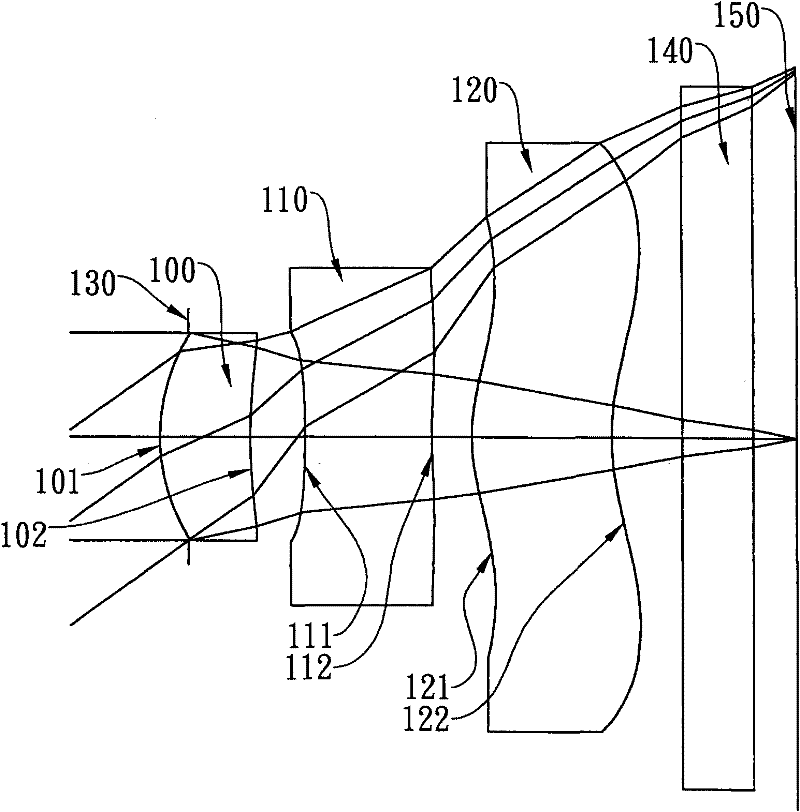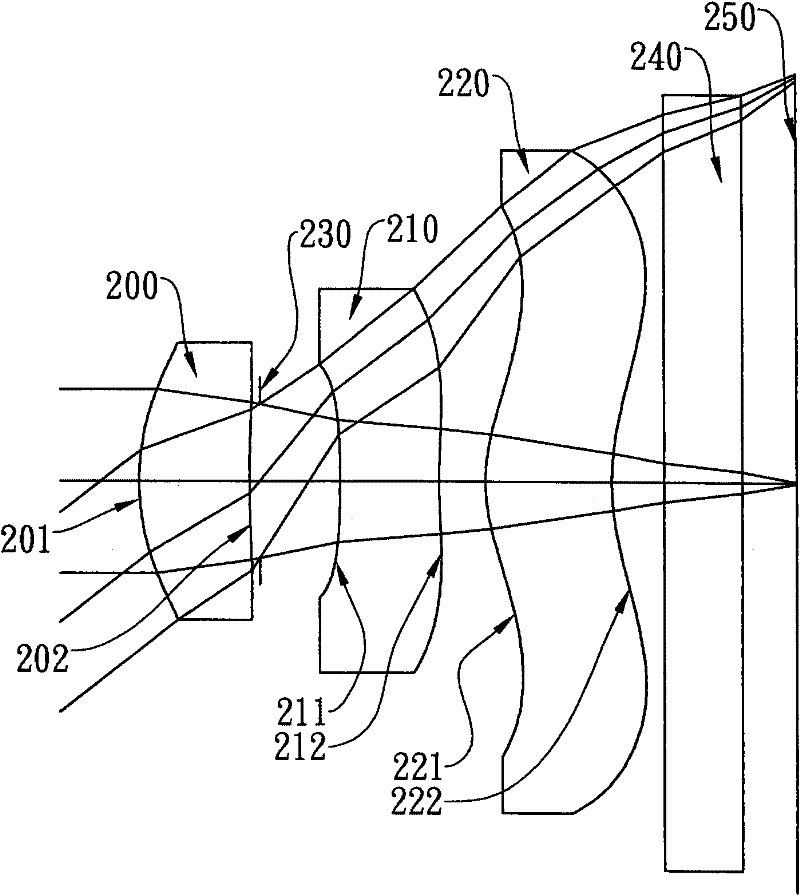Optical lens for camera
An optical lens and lens technology, applied in optics, optical components, instruments, etc., can solve problems such as difficulty in aberration correction, affecting imaging quality, etc., to achieve the effect of reducing sensitivity, good imaging quality, and reducing the total length of the lens
- Summary
- Abstract
- Description
- Claims
- Application Information
AI Technical Summary
Problems solved by technology
Method used
Image
Examples
no. 1 example 》
[0099] Please refer to the schematic diagram of the optical system of the first embodiment of the present invention Figure 1A , please refer to the aberration curve of the first embodiment Figure 1B . The optical lens for imaging in the first embodiment is mainly composed of three lenses, which sequentially include from the object side to the image side:
[0100] A first lens 100 with positive refractive power, its object-side surface 101 is convex and image-side surface 102 is concave, its material is plastic, the object-side surface 101 and image-side surface 102 of the first lens 100 are both aspherical ;
[0101] A second lens 110 with negative refractive power, its object-side surface 111 and image-side surface 112 are both concave surfaces, and its material is plastic, and the object-side surface 111 and image-side surface 112 of the second lens 110 are both aspherical, And the image side surface 112 of the second lens 110 is provided with two inflection points; and ...
no. 2 example 》
[0129] Please refer to the schematic diagram of the optical system of the second embodiment of the present invention Figure 2A , for the aberration curve of the second embodiment, please refer to Figure 2B . The optical lens for imaging in the second embodiment is mainly composed of three lenses, which sequentially include from the object side to the image side:
[0130] A first lens 200 with positive refractive power, its object-side surface 201 is convex and image-side surface 202 is concave, its material is plastic, the object-side surface 201 and image-side surface 202 of the first lens 200 are both aspherical ;
[0131] A second lens 210 with negative refractive power, its object-side surface 211 and image-side surface 212 are both concave, and its material is plastic, and the object-side surface 211 and image-side surface 212 of the second lens 210 are both aspherical, And the image side surface 212 of the second lens 210 is provided with an inflection point; and
...
no. 3 example 》
[0153] Please refer to the schematic diagram of the optical system of the third embodiment of the present invention Figure 3A , for the aberration curve of the third embodiment, please refer to Figure 3B . The optical lens for imaging in the third embodiment is mainly composed of three lenses, which sequentially include from the object side to the image side:
[0154] A first lens 300 with positive refractive power, its object-side surface 301 is convex and image-side surface 302 is concave, its material is plastic, the object-side surface 301 and image-side surface 302 of the first lens 300 are both aspherical ;
[0155] A second lens 310 with negative refractive power, its object-side surface 311 and image-side surface 312 are concave, its material is plastic, the object-side surface 311 and image-side surface 312 of the second lens 310 are both aspherical, And the image side surface 312 of the second lens 310 is provided with two inflection points; and
[0156] A thir...
PUM
 Login to View More
Login to View More Abstract
Description
Claims
Application Information
 Login to View More
Login to View More - R&D
- Intellectual Property
- Life Sciences
- Materials
- Tech Scout
- Unparalleled Data Quality
- Higher Quality Content
- 60% Fewer Hallucinations
Browse by: Latest US Patents, China's latest patents, Technical Efficacy Thesaurus, Application Domain, Technology Topic, Popular Technical Reports.
© 2025 PatSnap. All rights reserved.Legal|Privacy policy|Modern Slavery Act Transparency Statement|Sitemap|About US| Contact US: help@patsnap.com



